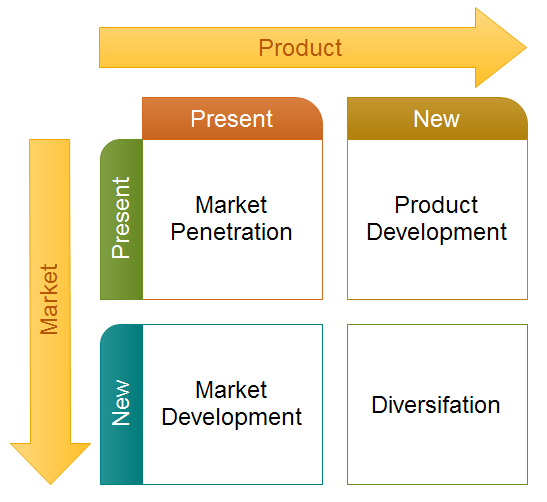As western automobile markets reached saturation, automobile giants like Chrysler and Volkswagen resorted to restructuring. Volkswagen had concentrated on its portfolio restructuring since early 90’s. Volkswagen acquired Skoda in 1991. Volkswagen helped Skoda to emerge out of bankruptcy and Skoda soon became “U.K.’s best loved car”. This in turn helped Volkswagen, whose profits were declining around the same time. It gained access to the little penetrated car market of Eastern Europe. In 2009, it acquired 49.9% stake in Porsche. During recession, Porsche plunged into debts. Volkswagen used this opportunity to gain from its rival, who had a respected brand name globally. Even though the car market has matured in western parts of the globe, Volkswagen has been using strategic acquisitions to grow further. The financial restructuring process of Volkswagen, called as ‘ForMotion’ is well-known. This restructuring process began in 2004. With the commencement of ‘ForMotion’, a number of workers lostContinue reading
Strategic Management Tools
SWOT Analysis: Strengths, Weaknesses, Opportunities and Threats
SWOT which stands for an abbreviation of Strengths, Weaknesses, Opportunities and Threats; is an analysis that defined as method to examine organization’s internal factors dealing with strengths and weaknesses, and its environmental opportunities and also the threats. SWOT analysis usually use in the preliminary phase of decision making as a general tool which it designed for being antecedent to strategic planning in different case and applications. SWOT Analysis can be used as a model, process, technique or framework to provide information about those factors strengths, of an organization by having many applications with possibility of being used in all the levels of the organization. SWOT analysis is a part of the strategic planning process. Companies have some internal and external forces in the business environment. As a first step of a strategic planning system, the strategic factors that are related with the potential of the company, should be identified andContinue reading
Benchmarking as a Strategic Business Tool
Benchmarking is the process of continuously measuring and comparing the business processes against comparable process of the leading organization to obtain the information that will help the organization to identify and implement improvement programs. Benchmarking as a tool stems from the early 1980s when organisational specialists from Xerox were discussing the big performance gaps between Xerox and its competitors. These specialists found two major applications for the process. First, benchmarking can be used to understand competitors and any other organisation by isolating and analyzing common functions and comparing the company’s own practices with them. Second, benchmarking can be used to compare the details of processes used in design, manufacture, marketing and services, as opposed to just the ï¬nished result In simple words, benchmarking is an approach of setting goals and measuring productivity based on best industry practices. It developed out of need to have information against which performances canContinue reading
The Concept of Strategic Groups
Meaning of Strategic Groups Strategic group is a group of firms within an industry which face the same environmental forces, have same resources and follow similar strategy in response to the environmental forces. These strategies include pricing practices, level of technology investment and leadership, product scope and scale capabilities, and product quality. By identifying strategic groups, analysts and managers are better able to understand the different types of strategies that multiple firms are adopting within the same industry. For example, the restaurant industry can be divided into several strategic groups including fast-food and fine-dining based on variables such as preparation time, pricing and presentation. The number of groups within an industry and their composition depends on the dimensions used to define the groups. The concept of strategic groups in strategic management stems from an observation by Hunt (1972). Hunt coined the term strategic groups to describe a group of firmsContinue reading
Value Chain Analysis – Porter’s Value Chain
The concept of Value Chain was propagated by Michael Porter in the 1980s in his book “Competitive Advantage: Creating and Sustaining Superior Performance” (Porter, 1985), as a tool of analyzing the firm’s internal environment and resource base. Value Chain Analysis is an analytical tool that describes all activities that make up the economic performance and capabilities of the firm, used to analyze and examine activities that create value for a given firm. A firm can be conceived of an aggregation of discrete activities and the competitive edge arises based on how a firm performs these activities better than its competitors. The cluster of these activities is called the value chain. According to Porter: “Competitive advantage cannot be understood by looking at a firm as a whole. It stems from the many discrete activities a firm performs in designing, producing, marketing, delivering and supporting its product. Each of these activities canContinue reading
Intensive Growth Strategies – Ansoff Matrix – Product-Market Grid
Intensive Growth Strategies – Expansion through Intensification Intensification involves expansion within the existing line of business. Intensive growth strategy involves safeguarding the present position and expanding in the current product-market space to achieve growth targets. Such an approach is very useful for enterprises that have not fully exploited the opportunities existing in their current products-market domain. A firm selecting an intensification strategy, concentrates on its primary line of business and looks for ways to meet its growth objectives by increasing its size of operations in its primary business. Intensive expansion of a firm can be accomplished in three ways, namely, market penetration, market development and product development first suggested in Ansoff’s model. Intensification strategy is followed when adequate growth opportunities exist in the firm’s current products-market space. However, while going in for internal expansion, the management should consider the following factors. While there are a number of expansion options,Continue reading




